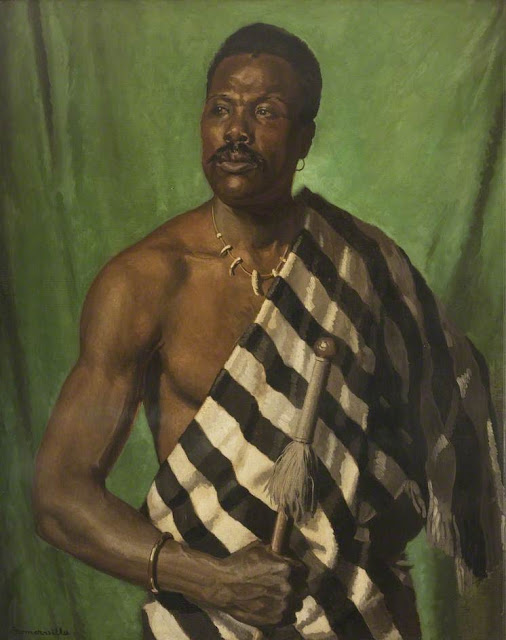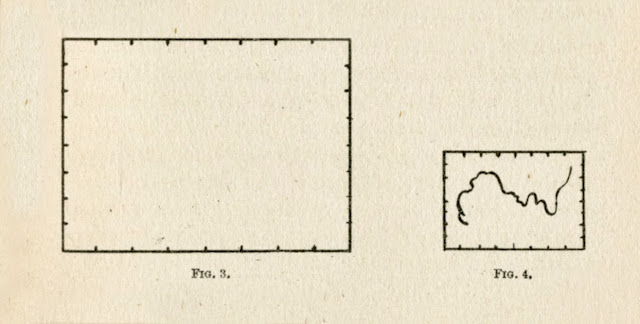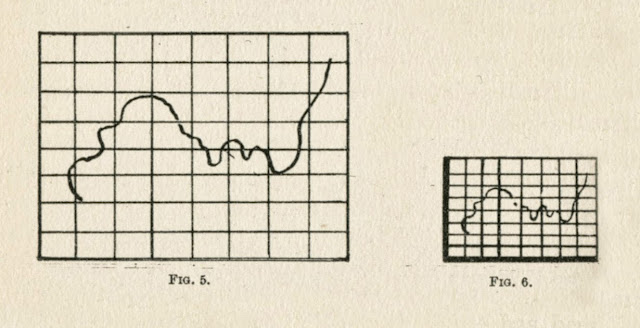 |
| Norahoil on canvas 124.5 X 100 cm |
In the current age, when there is so much information so readily available at our fingertips, it can be maddening to find oneself at a dead end while researching a public figure. It is hard to imagine that an artist who has more than three dozen paintings in public museums, would have no accessible biographical information online. Nevertheless, such is the case with portrait artist Howard Somerville. If there is any 20th century representational artist who has a claim to being pushed into obscurity, it is Somerville.
We know where he was from - most sources say that he was British, but others claim he was Scottish - so it is probably safe to say he was from the United Kingdom. We know he was born in 1873 and died in 1952. We know Somerville was a contemporary of Sir William Orpen, and that by the look of his work, either studied with Orpen, or at least emulated the Irishman. And we know he was not T. Howard Somervell, winner of an Olympic Gold Medal and the climber who scaled Mt. Everest in 1922, even though Wikipedia directs all enquiries into Somerville to Somervell's page.
And that is about the extent of the information available on Howard Somerville.
I have contacted a curator in England whose museum owns several of Somerville's paintings, and I hope that she may be able to provide me with a biography on the artist. I also welcome any information that readers of this blog can provide. In the meantime, please enjoy these samples of Howard Somerville's paintings.
UPDATE: September 12, 2013. Jill Iredale, Curator of Fine Art at the Cartwright Hall Art Gallery in Bradford, England, responded very quickly to my request for more information on Howard Somerville. She confirmed that the artist is indeed Scottish; he was born in Dundee in 1873. Unfortunately, that is the extent of the museum's information. Ms. Iredale would, as well, appreciate any additional information that may be uncovered about the artist.
As for now, Mr. Somerville remains a mystery.
UPDATE: September 12, 2013. Jill Iredale, Curator of Fine Art at the Cartwright Hall Art Gallery in Bradford, England, responded very quickly to my request for more information on Howard Somerville. She confirmed that the artist is indeed Scottish; he was born in Dundee in 1873. Unfortunately, that is the extent of the museum's information. Ms. Iredale would, as well, appreciate any additional information that may be uncovered about the artist.
As for now, Mr. Somerville remains a mystery.
 |
| Miss Nora Baring oil on canvas 125 X 99 cm |
 |
| Sylvia (1922)oil on canvas 101.6 X 76.2 cm |
 |
| Mrs. Fred Young oil on canvas 125.8 X 100.6 cm |
 |
| Gipsy oil on canvas 92.5 X 72 cm |
 |
| Dame Bertha Surtees Phillpotts (1925) oil on canvas 100 X 75 cm |
 |
| Elizabeth Woodville oil on canvas 76.2 X 63.5 cm |
 |
| Diana Ogilvy oil on canvas 220 X 150 cm |
 |
| Alderman Charles Hardman, Mayor of Oldham oil on canvas 152.5 X 101.5 cm |
 |
| Zulu Head (1921) oil on canvas 61 X 51 cm |
 |
| Zulu with a Black Eyeoil on canvas 59 X 49 cm |
 |
| Nigel, a Zulu oil on canvas 91 X 76 cm |
 |
| Joseph Estlin Carpenter oil on canvas 86.4 X 62.2 cm |
 |
| The Late Reverend Theodore Bailey Hardy, VC, DSO, MC (1919)oil on canvas 91.4 X 76.2 cm |
 |
| Howard Somerville, Esq. (In the Studio) oil on canvas 110 X 85 cm |
 |
| The Artist and Model oil on canvas 74.9 X 61.9 cm |
 |
| In the Studio No. IV : Self Portrait oil on canvas 151 X 100 cm |
 |
| Laurita oil on canvas 100 X 75 cm |
 |
| Sir Henry Kenyon, Treasurer of the University of Sheffield oil on canvas 120 X 86 cm |
 |
| W.H. Brocklehurst, JP oil on canvas 112 X 86.5 cm |
 |
| Butler Wood oil on canvas 112 X 88 cm |
 |
| Sir James Hill oil on canvas 152.5 X 101.5 cm |
 |
| Lady Hill oil on canvas 151 X 100.5 cm |
 |
| Lady in Silk Dress with Pearls oil on canvas 44 X 24 in. |
 |
| Portrait of a Young Woman oil on canvas 63.5 X 50.8 cm |
 |
| The Chinese Fan oil on canvas 74.5 X 62 cm |
 |
| Joyce oil on canvas 74.7 X 62.1 cm |
 |
| Julie with the Oranges oil on canvas 76 X 63.5 cm |
 |
| Joyce and a Mantilla Shawl oil on canvas 92 X 76.8 cm |
 |
| Eileen oil on canvas 128.4 X 103 cm |
 |
| The Red Burnous oil on canvas 126 X 102 cm |
 |
| Elissa Landi oil on canvas 125.9 X 99.5 cm |
Howard Somerville's publicly-owned paintings are in the collections of many institutions in the United Kingdom, including: Gallery Oldham, The Royal Borough of Kensington and Chelsea Culture Service, the Cartwright Hall Art Gallery, Girton College at the University of Cambridge, the Worchester Guildhall, the Russell-Cotes Art Gallery & Museum, the Atkinson Art Gallery Collection, Sunderland Museum & Winter Gardens, the collection of the Lancaster City Council, The Stanley & Audrey Burton Gallery at the University of Leeds, Harris Manchester College at the University of Oxford, the Watford Museum, the Walker Art Gallery, the Grundy Art Gallery, the collection of the South Ayrshire Council, the Potteries Museum & Art Gallery, the University of Sheffield, the Dundee Art Galleries and Museums, The Mercer Art Gallery, Portsmouth Museums and Record Service, the Imperial War Museums, and the Shipley Art Gallery. There is also a portrait of "Joyce" (not pictured here) in the collection of the Huntington Museum of Art in West Virginia.




























































































































































































































